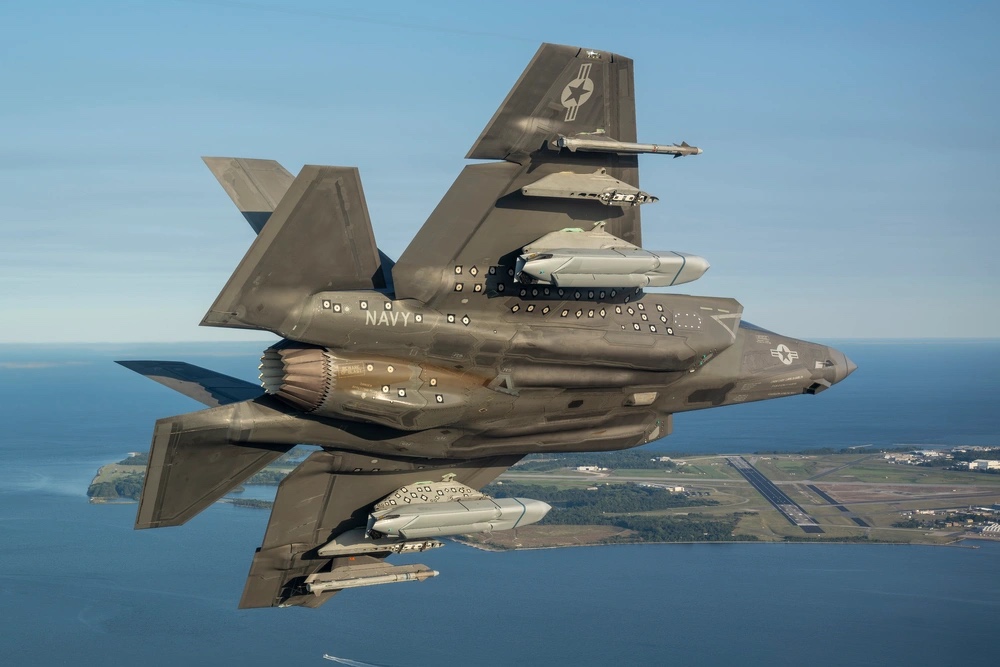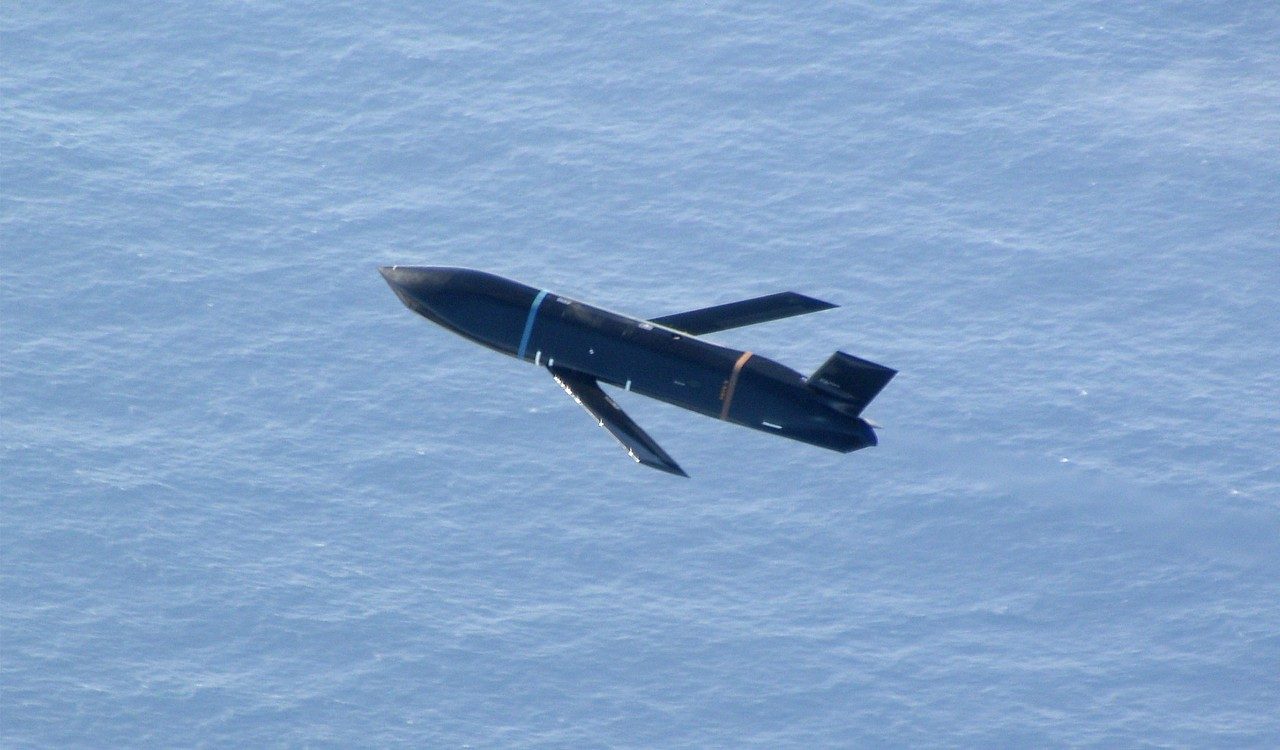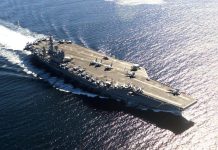Amid the looming threat of conflict with China, the United States is expanding its air-launched anti-ship attack capability. In addition to the FA-18E/F Super Hornets and F-35 Lightning II stealth fighters, the F-16 Viper could soon carry the formidable Long Range Anti-Ship Missile (LRASM).
In a contract notice published on March 17, the US Naval Air Systems Command (NAVAIR) expressed its intention to negotiate a contract with Lockheed Martin for the integration and test support of the AGM-158C-1 Long-Range Anti-Ship Missile (LRASM) on the F-16 aircraft.
“Lockheed Martin Missiles and Fire Control, Orlando, Florida, has been awarded a $122,573,576 contract modification (P00022) to a previously awarded contract (FA8682-19-C-0008) to procure tooling and test equipment needed to increase production quantities of Joint Air-to-Surface Standoff Missile and Long-Range Anti-Ship Missile,” read the notice.
The LRASM is based on the Joint Air-to-Surface Standoff Missile (JASSM), which was earlier integrated with the F-16’s C/D variant and other bomber aircraft.
The integration of the AGM-158C-1, the primary variant of this anti-ship missile, indicates that the F-16 is still one of the most reliable aircraft in the US Air Force (USAF) and is likely to play a significant role in any potential conflict, including with China. The AGM-158C is available in two primary subvariants: the in-service C-1 and the still-under-development C-3, which is also called LRASM-Extended Range or LRASM-ER.

Currently, the F-16 has the capability to carry the AGM-84 Harpoon anti-ship missile, which is now in the process of being replaced by operators across the world. Thus, the potential integration of the LRASM would significantly bolster the F-16’s firepower.
The LRASM can currently be launched from just two platforms: the Navy F/A-18E/F Super Hornets and Air Force B-1 bombers.
However, efforts are underway to integrate the missile into various other platforms. On March 4, Lockheed Martin stated that the AGM-158C Long-Range Anti-Ship Missile (LRASM) had successfully completed a captive-carry flight on an F-35B, the aircraft’s short-take-off-and-vertical-landing (STOVL) variant.
Before that, in September 2024, the Pentagon published the photo of the AGM-158C Long-Range Anti-Ship Missile (LRASM) being launched from Naval Air Station (NAS) Patuxent River, Maryland, from an F-35C test aircraft.
Lockheed Martin states that the missile will be integrated into the Block 4 variant of the F-35 Lightning II, which is currently under development.

Not just that, the P-8A Poseidon Maritime Patrol Aircraft has also been earmarked to become a launch platform for the long-range anti-ship missile. Boeing is working to integrate the missile into the aircraft, and testing is currently underway.
Moreover, in January this year, the US Navy’s Naval Air Systems Command (NAVAIR) announced that it plans to negotiate an exclusive contract with Lockheed Martin, the lead contractor for the LRASM, to install the C-1 version of the missile on the agile workhorses of the USAF: the F-15E and F-15EX fighter jets.
These efforts are aimed at bolstering the country’s capability against a rapidly expanding Chinese People’s Liberation Army Navy (PLAN). Since any conflict between the US and China will likely take place on the sea, the US must have an adequate stockpile of long-range missiles and enough launch platforms to carry out stand-off attacks against Chinese naval vessels.
The US Air Force (USAF) has devised a multi-year plan to acquire the formidable LRASM. Earlier this month, the Air Force awarded Lockheed Martin a nearly US$122.6 million contract to increase production of both LRASMs and JASSMs.
Long-Range Missiles To Combat China
The LRASM, derived from the AGM-158B JASSM-ER, was created by the Defense Advanced Research Projects Agency (DARPA) for the US Air Force and the US Navy. It has been designed to lead the way in developing more advanced autonomous targeting capabilities than the US Navy’s Harpoon anti-ship missile, which has been in use since 1977.
In particular, the missile’s design prioritizes survivability. This intelligent anti-ship missile is precision-guided and can intercept various surface threats while delivering a precise payload from a safe, stand-off distance. The missile navigates to its target in semi-autonomous mode.
With a minimum range of 200 nautical miles (over 370 kilometers), the LRASM can be used against hostile ships, aircraft, drones, land-based targets, and even shallow submarines.
The LRASM’s sophisticated guidance operation reduces the need for GPS navigation, network links, and ISR (intelligence, surveillance, and reconnaissance) platforms in hostile electronic warfare environments by allowing the weapon to locate and eliminate its pre-defined target using gross target cueing data.
More importantly, the missile uses a passive imaging infrared sensor during its terminal flight phase. This sensor visually identifies and hits the most vulnerable areas of its target while evading adversary radar detection and being impervious to jamming.

The missile is expected to be one of the most crucial US weapons against China in a potential conflict that could be triggered by an invasion of Taiwan or a conflict in the South China Sea.
China has made no bones of the fact that it is willing to annex Taiwan with force, as recently demonstrated by images of barges intended for amphibious landing, as well as the record number of aircraft intruding into the Taiwanese Air Defense Identification Zone (ADIZ) recently. A Chinese invasion of Taiwan could trigger a region-wide conflict and draw America into its fold.
Since China has formidable anti-access and area-denial capabilities within the First Island Chain (which includes Japan, Taiwan, the Philippines, and parts of Indonesia), long-range weapons will be essential in the early phases of the battle.
In addition, to attack from outside China’s air defense envelope, US troops would rely on bomber-launched cruise missiles because they cannot get close to the Chinese fleet or resupply ground forces in Taiwan.
LRASMs will allow US fighter jets and bombers to attack high-priority sea targets like warships and aircraft carriers. Because of their long-range tactical strike recognition and delivery capabilities, the missiles will be crucial to carry out combat operations in both open ocean and coastal waterways.
The Chinese have been keenly watching the adoption and integration of the missile. Earlier, Chinese scientists conducted a wargame simulating a US military barrage of stealthy LRASMs targeting a Chinese aircraft carrier strike group, as previously reported by the EurAsian Times.
The scenario envisioned a sudden US offensive, where ten LRASMs were launched simultaneously from various platforms. The missiles targeted a large Chinese destroyer escorting the PLA’s aircraft carrier.
With the rise of the People’s Liberation Army Navy (PLAN) as a formidable near-peer adversary and an increasingly complex maritime security landscape, the LRASM becomes indispensable. And China seems to be watching and preparing its defensive strategies to evade this cutting-edge, lethal missile.
In addition to the aircraft listed above in the report, the AGM-158C LRASM was built to integrate with the Mark 41 Vertical Launching System, which is utilized on several US Navy vessels. A modified Mk 114 jettisonable rocket booster is fitted to give it the power to attain altitude. Additionally, Lockheed Martin has been looking into the possibility of a submarine-launched version.
- Contact the author at sakshi.tiwari9555 (at) gmail.com
- Follow EurAsian Times on Google News




